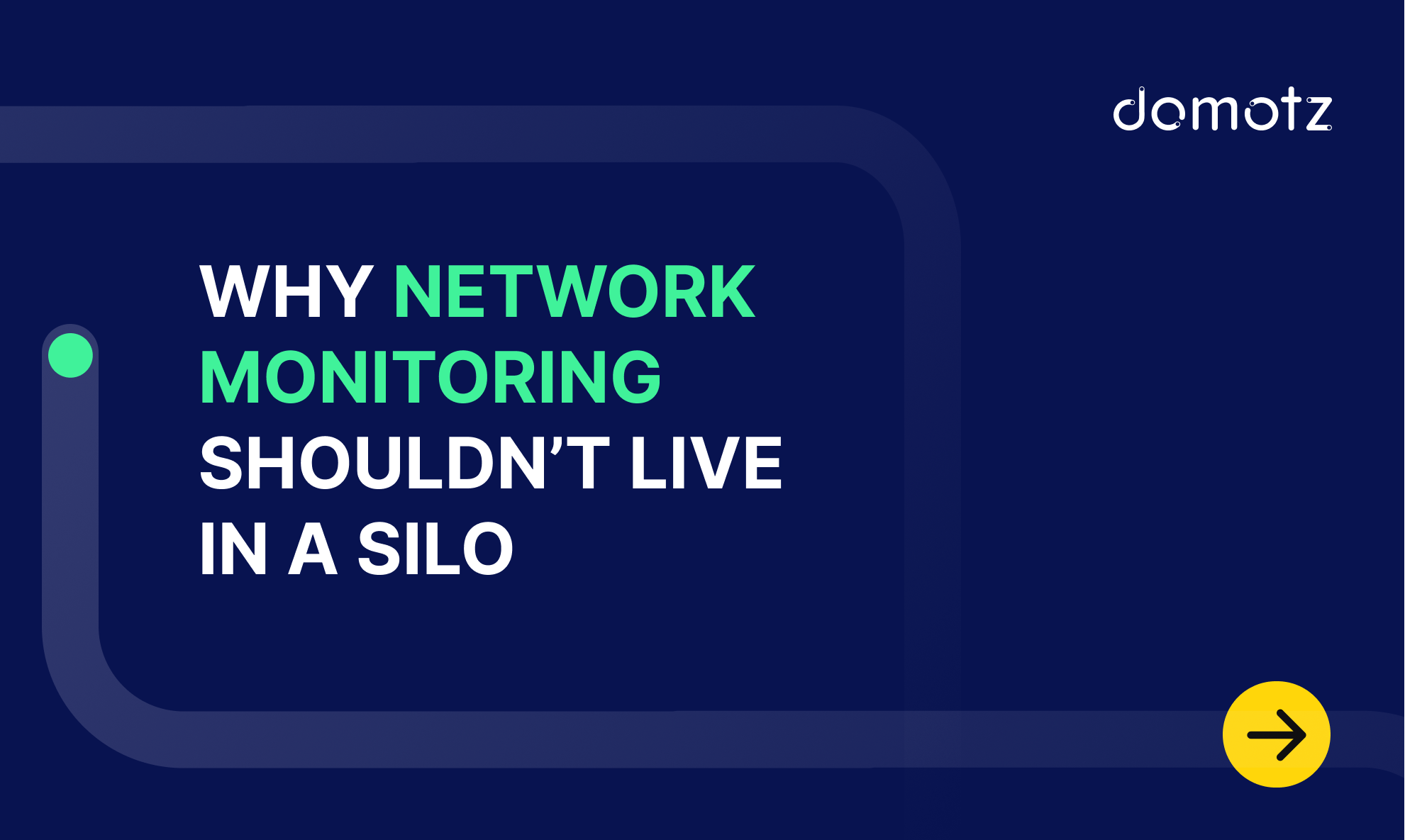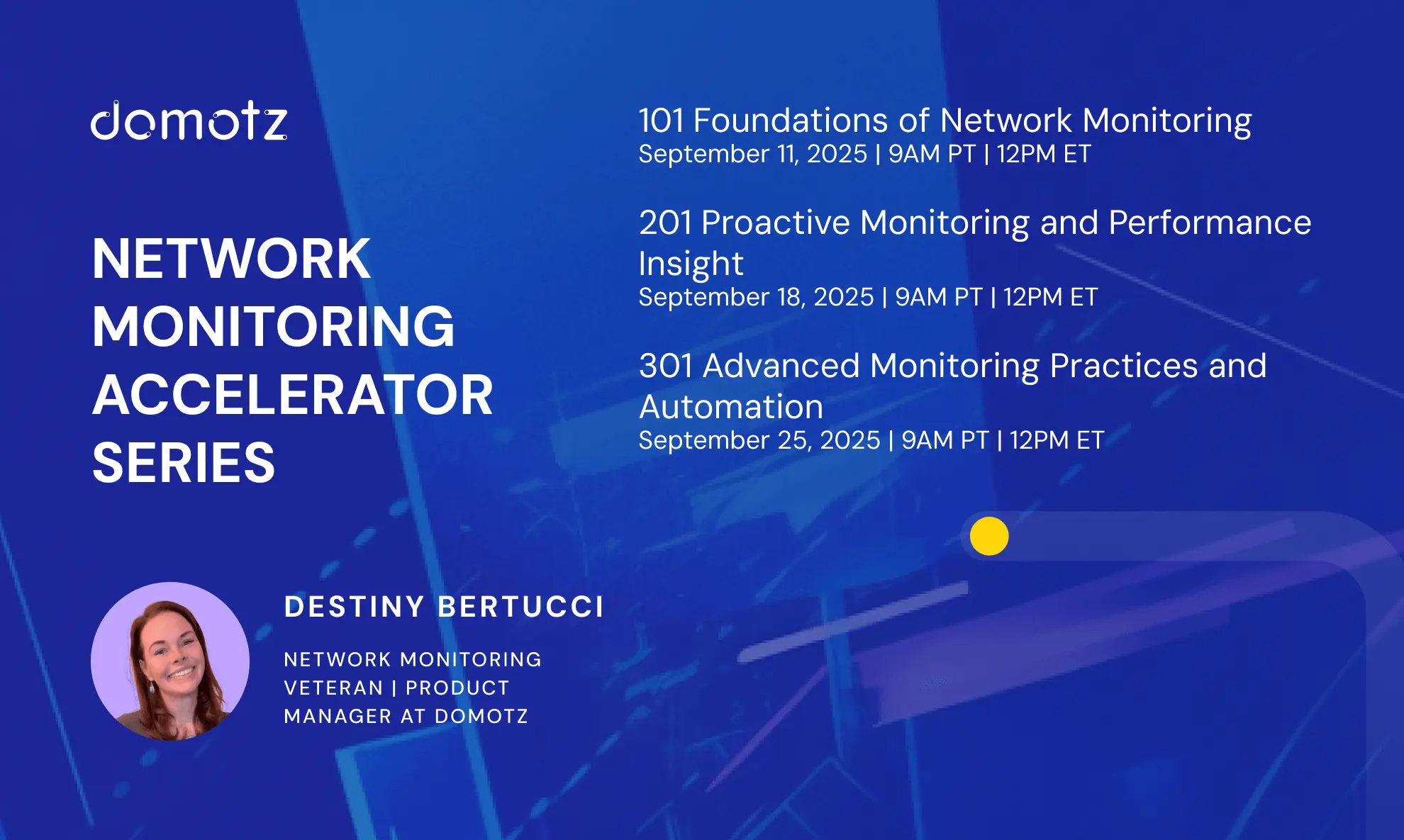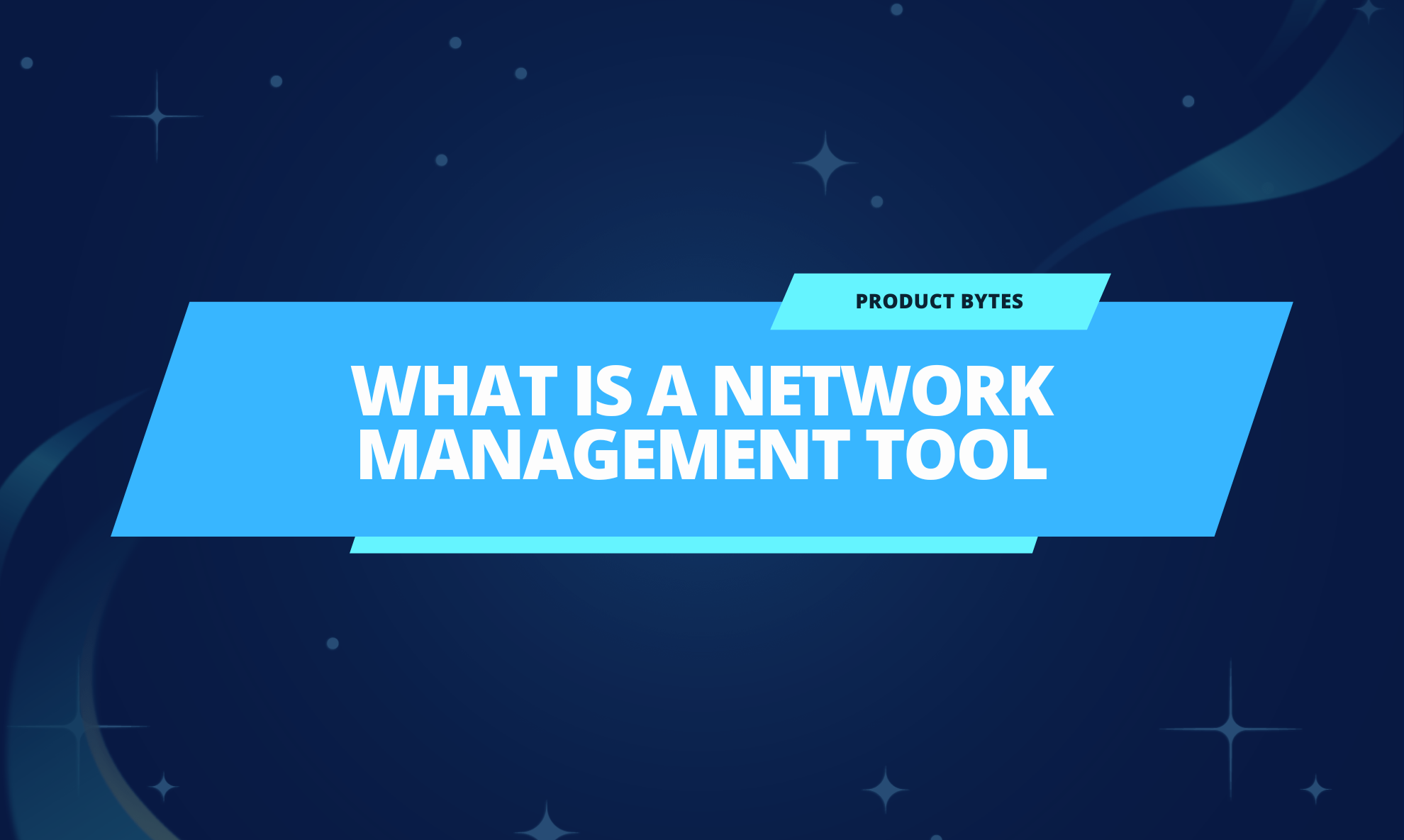Managing a network is a complex job, and using multiple tools can make it even harder. Many managed service providers and IT professionals have tools for alerts, another for remote access, and others for security. That’s on top of programs like PSAs, and quite often, they don’t always work together.
This creates an IT silo, a place where information lives in only one system, isn’t shared, and requires another process. Oftentimes, a team member manually reviews it, and then connects it with other information from other tools.
This type of network monitoring workflow is costly, both in time, resources, and subscriptions to software, and leaves teams with a lack of true visibility into their network. That means increased risk of security breaches, reduced productivity of the team members, and an inability to troubleshoot problems quickly. Customer and employee satisfaction can also be negatively affected when network monitoring lives in a silo.
In this article, we’re going to look at the challenges of siloed network monitoring, and solutions that will standardize network monitoring workflows, integrating all of your tools together, and building a team and tools that collaborate together effectively.
Challenges of Siloed Network Monitoring Workflows
While a siloed approach to network monitoring may seem manageable, it can create several challenges that prevent you from seeing the bigger picture of your network. These challenges can reduce network operations efficiency and limit your ability to be proactive. But if we understand the challenges, we can move towards correcting them.
Fragmented Date
When you have multiple tools collecting data, and they in turn have their own dashboards, that is considered data fragmentation. You will need to open up each individual program to get information, and then cross reference it with data from another tool. This makes it difficult to see the full picture of your network’s health, and slows down your ability to identify problems and solve them quickly.
Lack of Visibility
Working in IT silos creates blind spots in your network. When your network monitoring and security tools don’t communicate with each other, it’s easy to miss a new device joining your network, or to lose an existing device that has stopped responding. If you can’t see the full picture, you can’t respond to it. And it makes it difficult to respond if your data is fragmented and going into different tools.
Reduced Productivity
When you have multiple tools, someone needs to check each and every one of them. That means multiple browsers and monitors need to be open at all times scanning for problems. That person also is switching between systems to get data they need, oftentimes after a problem has already been spotted, because they lacked visibility to see it before. This means IT professionals are less productive in preventing issues, as they are constantly fixing problems they couldn’t see before. And worst of all, they are stuck looking into problems longer because data is spread across multiple systems.
Missed Opportunities
Managed service providers and IT professionals should always be looking for ways to improve their networks. But an IT silo makes it difficult to do that, as fragmented data makes it difficult to spot trends, like a device underperforming, or an area of an office that could use an upgrade. You can’t fix or improve what you can’t see, and every time someone needs to toggle between systems, they aren’t getting information from the previous system to make a better decision.
Inability To Troubleshoot
When tools aren’t integrated, it makes it difficult to troubleshoot problems. Troubleshooting becomes slower, and a much more difficult process. Without a single network monitoring workflow, addressing issues quickly and efficiently becomes challenging, because the IT professional involved now needs to spend more time tracking the source of the problem, or the problem itself. That leads to slower response times, and possibly network downtimes. And network downtimes means a lack of productivity and revenue driving activities for customers who require the devices on their network. As well as possible services and work that needs to be completed for internal teams.
Solutions for Solving IT Silos
With an understanding of the challenges IT silos bring to IT professionals, you can begin to create better network monitoring workflows that allow you to be proactive. The key is reducing as many silos as you can, and bringing them together under one network monitoring system. This way, you get a single source of truth, a detailed map of your network, and one area all of your professionals can focus on.
Integrated Monitoring Tools
Choosing the right tools is going to be the first solution to the problem. Network monitoring software that can integrate with your PSA and other tools will bring all of your data into one single system. This immediately eliminates switching between different dashboards, giving you all the data on your network’s health in one place.
Standardize Data Collection
When creating network monitoring workflows, it’s important to build a standardized practice of collecting data. It’s important to get a tool that collects data, but it’s also just as important to have that data organized in a consistent way. By doing this, you reduce the need for your team members to decipher different data points, charts, dashboards, and spreadsheets. Instead, it’s one uniform source of data that they recognize and get used to, so they spend less time focusing on the method of delivery, and more on what the data is actually saying.
Focus On Process Redesign
When we speak about creating a new network monitoring workflows that are uniform, what we are also talking about is making it easier for everyone involved. By focusing on creating a process that works with everyone in mind, you open the door to collaboration. Sharing information, spotting problems, and working together is easier when you’re all sharing the same data. Breaking down IT silos isn’t just about the technology, but also the people who use the technology. Now individual people aren’t responsible for single data points and holding all of that information themselves. It’s available to everyone on the team, which is how you create a truly efficient network monitoring process.
IT Silos Shouldn’t Hold You Back
A siloed approach to network management can feel necessary at times. Often IT professionals and MSPs look for a solution that fixes the problem, and don’t think about their growing tech stack and how that can affect their own performance. And that can create real challenges for the business, and hold it back from truly growing, because the systems in place aren’t working to create time to act on new opportunities.
By integrating your tools, standardizing your data collection, and looking at network monitoring workflows as a unified problem that needs a single solution, you can reduce your own IT silos and create a single source of truth for your entire network, making your process more efficient, which only benefits your clients or co-workers.
Domotz gives you this unified system to monitor networks. It reduces IT silos with over 100+ integrations that bring in all your important data points. And then it displays it in dashboards you can take action on. It’s one location that everyone can use to gain insights to not just solve problems that are happening, but spot trends to limit potential disruptions in the future.
Start your Free Trial today and begin to see the benefits of unified network monitoring workflows.


